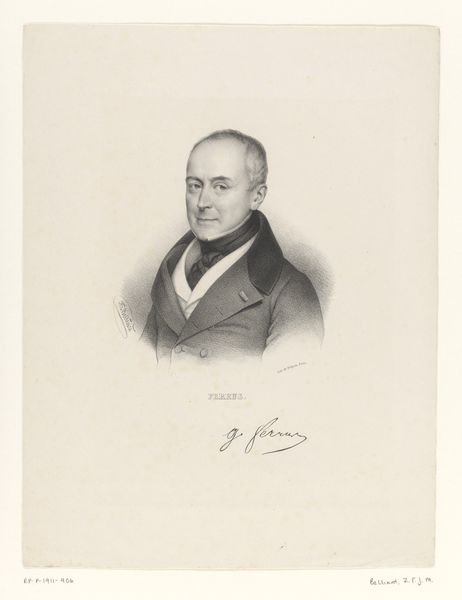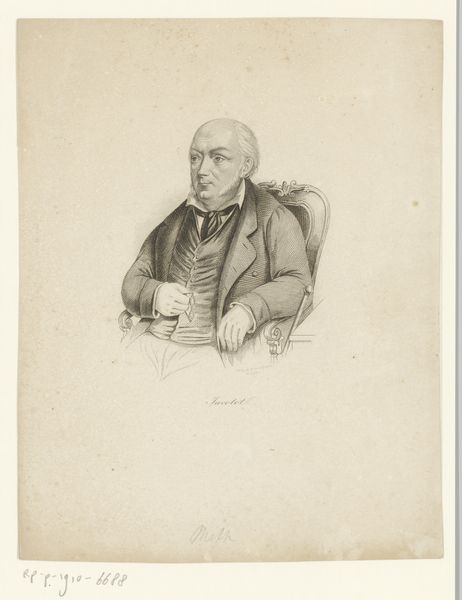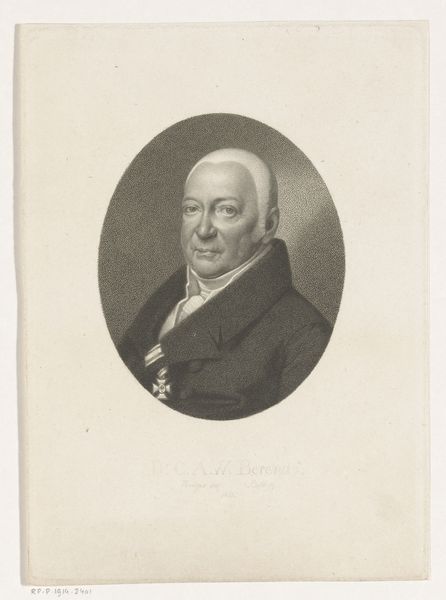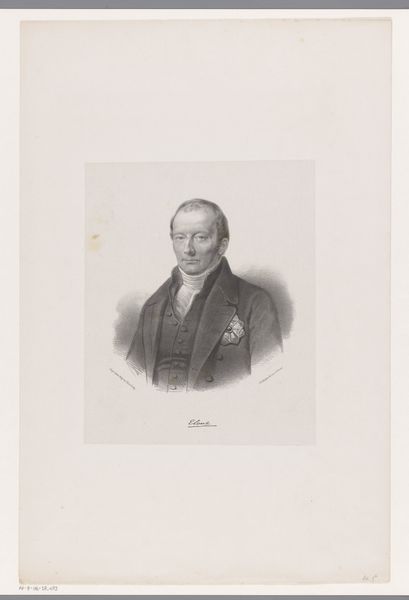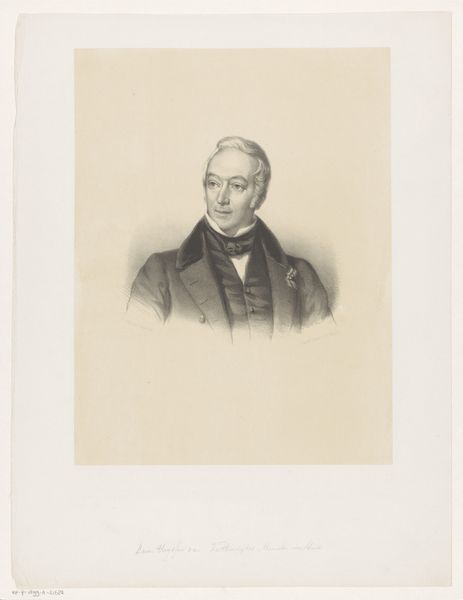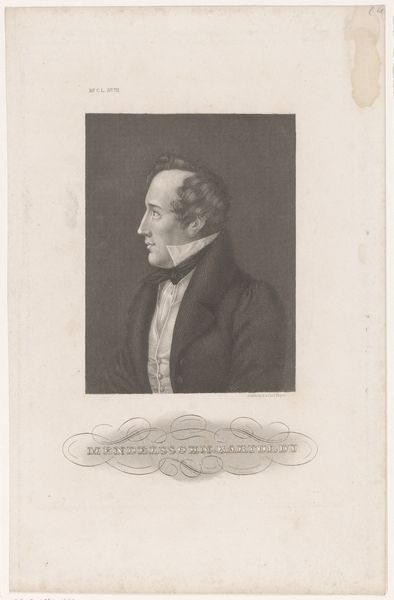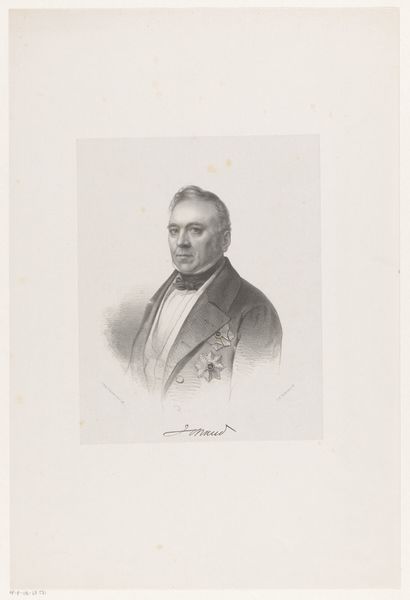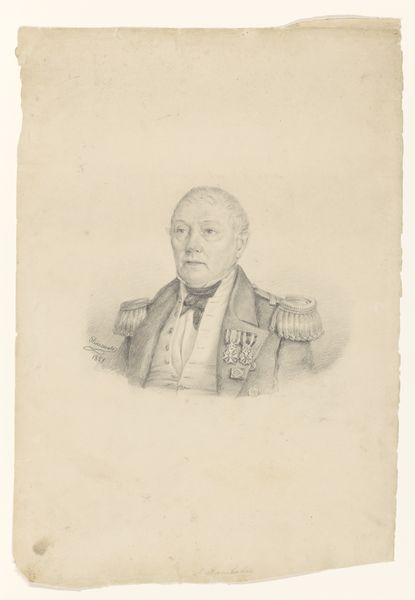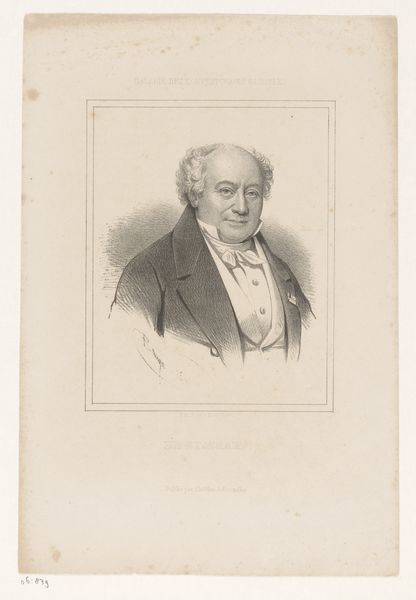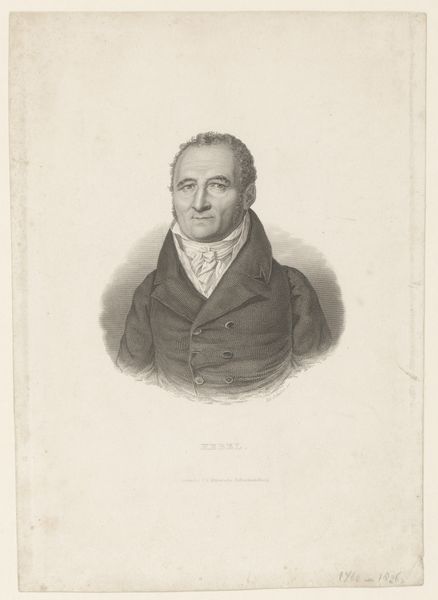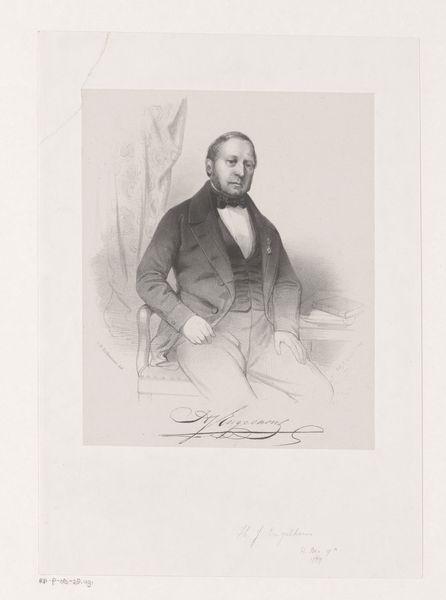
drawing, pencil
#
drawing
#
neoclacissism
#
pencil drawing
#
pencil
#
portrait drawing
#
academic-art
Dimensions: height 348 mm, width 270 mm
Copyright: Rijks Museum: Open Domain
Curator: Before us is "Portret van Pieter Jacobus van Maanen," a pencil drawing executed sometime between 1809 and 1850, now residing in the Rijksmuseum collection. The artist is Jean Augustin Daiwaille. Editor: It’s remarkable, really. Just look at the subtle gradations achieved with a simple pencil. The soft, almost smoky quality, evokes a real sense of somber respectability. Curator: It's certainly in line with the Neoclassical aesthetic of the period – a turn towards reason, order, and a visual language drawn from the ideals of antiquity. Pieter Jacobus van Maanen was a significant figure in Dutch politics and law at that time, and portraiture played a crucial role in cementing his status. Editor: Right, but it's the tangible process of creation that I find compelling. You can almost feel the artist’s hand moving across the paper, layering tone upon tone. The labor is so apparent. It isn't just about representing a powerful man, it's also a testament to skill, practice and the social status of the artist and his craft. Was this a commissioned piece, and what did such commissions signify? Curator: Likely commissioned, yes. Portraiture was essential for maintaining power. Think about the market forces at play – Daiwaille needing to earn a living, van Maanen wanting to project a certain image to his peers and to posterity. Academic art like this upheld the social hierarchies. Editor: And consider the role of paper in all this – handmade, likely expensive. The material reality shapes the possibilities for mark-making, as well as the picture's function as an exclusive object. It reflects a culture where status and selfhood are intricately connected with materials. Curator: I agree. It offers a powerful lens through which we can view 19th-century Dutch society. Daiwaille has created more than a likeness; he's produced a symbol. Editor: Ultimately, it’s the materiality and process that bridge the gap between us and this image of power. It brings us back to the hands that made it. Curator: Precisely, making visible the systems of value that surround the image.
Comments
No comments
Be the first to comment and join the conversation on the ultimate creative platform.
